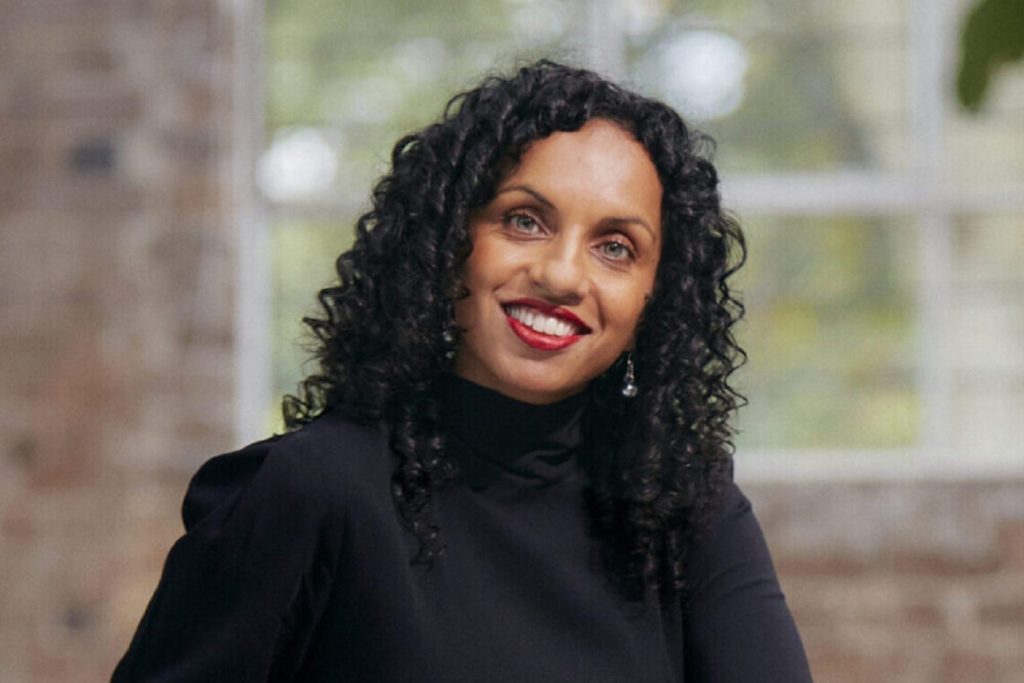How do women presidents and prime ministers change their countries and ultimately the world?
With just 30 female prime ministers and presidents globally, it’s a question that human rights lawyer and activist Ramona Vijeyarasa has been seeking to answer: through research, as an author, and as the creator of the Gender Legislative Index, a tool she hopes will help push governments and parliaments to enact better laws for women
Vijeyarasa is a senior lecturer at the University of Technology Sydney, an advocate for gender justice, and author of the recently published book, “The Woman President: Leadership, Law and Legacy for Women Based on Experience from South and Southeast Asia,” presenting her fascinating research into the difference that women make when it power.
The index is an AI and human evaluation into whether a particular law will advance or hinder women’s rights. The evaluation is based on criteria from International Women’s Rights Law Standards and features prominently in her new book, where Vijeyarasa shares a unique comparative study of women’s leadership and the law that offers new ways of understanding the impact of female presidential leadership on women’s everyday lives.
The book analyses the legal legacies of four women presidents: Corazon Aquino (1986-1992), Gloria Macapagal Arroyo (2001-2010), Megawati Sukarnoputri (2001-2004) and Chandrika Bandaranaike Kumaratunga (1994-2005).
Through concrete examples and research, Vijeyarasa shows that strong evidence is necessary for the nuanced and careful conversation that this topic calls for.
Having contributed to Women’s Agenda in the past, including share three reasons on the difference to women that female leaders make, Vijeyarasa joined Women’s Agenda podcast host, Angela Priestley, as a special guest host for the latest episode of The Women’s Agenda Podcast. (On iTunes and Spotify)
Vijeyarasa’s initial motivation to begin engaging in critical gender justice work came from seeing a lack of women in leadership and she notes the unsettling statistic that there are currently just 30 female presidents and prime ministers worldwide.
To put that 30 women presidents and prime ministers into context, Vijeyarasa says this means there are only 30 women leaders from around 200 countries– some of which hold both the position of president and prime minister.
“We’ve got Beyonce singing, ‘girls run the world’ but girls don’t rule the world and I think we need to talk about why we’re not seeing more women getting to those leadership roles and how significant that is.”
Vijeyarasa has lived and traveled all over the world– fighting against domestic violence in Brazil, meeting with women in the floating villages of Cambodia and standing aside women farmers in Liberia.
She’s witnessed these countries evolve and says, “It may not be at the pace we want, but I’ve seen a change. When you think about how few women have made it to the level of the president or prime minister in a country, it’s remarkable how slow progress has been.”
Referencing the disappointing G7 summit photo this year where mostly male leaders from the group of seven countries sat on the hills of Germany with only one female in the midst, Vijeyarasa says, “Women can’t be at these global decision-making tables if they’re not the head of their nations.”
Oftentimes, it’s easy to become solely focused on this dismal lack of female representation in world politics but when it comes to her book, Vijeyarasa is trying to flip this narrative by shifting the focus away from the absence of women and placing it onto what actually happens when women are present.
“I do think there’s a different kind of leadership model when women are present,” says Vijeyarasa.
“I’ve seen women’s groups mobilise more resources when there’s a window of opportunity because a woman is a leader. I’ve seen women-friendly outcomes. I’ve seen more cabinet appointments. So, let’s start talking about what happens when women finally do get to that highly coveted top job.”
To determine what happens when women get those high-ranking roles, Vijeyarasa did diligent research, travelling to the Philippines, Indonesia and Sri Lanka to interview former women MP’s, cabinet members, women and men activists and scholars from the region.
As detailed in her book, she used these conversations as an opportunity to do a comparative study of four women leaders from each country, reflecting on their pathways to politics and how they changed laws while they were in power.
Even with a limited pool of choice for countries with female leadership, Vijeyarasa says she chose these three South and Southeast Asian countries for a variety of reasons.
For one, in South and Southeast Asia, a relatively high number of women have made it into president and prime minister roles, and there was an opportunity to develop a theory with an Asian Global-South perspective amongst the dense study of North America and Europe in academia.
Vijeyarasa also says these three countries have highly patriarchal political systems, making it all the more interesting to examine how women are able to break into political power in these regions.
And while an increase in women leaders is something to be applauded, Vijeyarasa’s Gender Legislative Index also points to the importance of examining the impact these leaders have on the progression of women’s rights.
Looking at the current global political landscape where two conservative candidates– Georgie Maloney in Italy and Liz Truss in the UK– could push the number of women in global political leadership from 30 up to 32 if elected, Vijeyarasa finds it necessary to question whether their stances, such as on a reduction in public services, will actually be a positive for women.
Here in Australia, it was significant to see the many woman independents successfully running in the past election and Vijeyarasa thinks it’s just the beginning of more vocal voices from women in parliament who are willing to push for a more progressive agenda.
On female leadership overall, she says, “The ideal package would be a woman leader who really wants to advance women’s rights and is vocal and articulate in doing that.”
See Ramona’s book The Woman President, Leadership Law & Legacy Women’s Lives Based on Experiences from South & SE Asia on Booktopia here.


